Texture 101: Tips for Trying Trickier Textures with @msdawnslp Dawn Winkelmann, MS, CCC-SLP
- What sort of textures babies can safely eat
- What foods babies should not eat for baby-led weaning
- How to try new textures safely for your baby if you're feeling stuck on the beginner starter foods
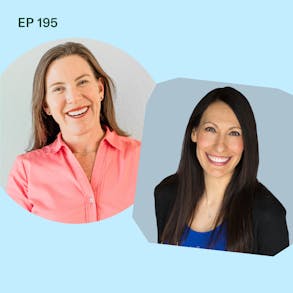
LISTEN TO THIS EPISODE
Episode Description
How do you get your baby to eat new textures? What texture of foods can babies safely eat? In this episode baby-led weaning expert Dawn Winkelmann, MS, CCC-SLP and I are discussing tips for trying out trickier textures for your baby and why we don’t want to get stuck on purees!

Links from this Episode
- Baby-Led Weaning with Katie Ferraro program with the 100 First Foods™ Daily Meal Plan, join here: https://babyledweaning.co/program
- Baby-Led Weaning for Beginners free online workshop with 100 First Foods™ list to all attendees, register here: https://babyledweaning.co/baby-led-weaning-for-beginners

Latest Episodes
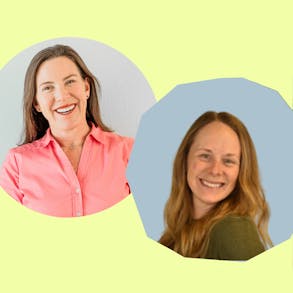
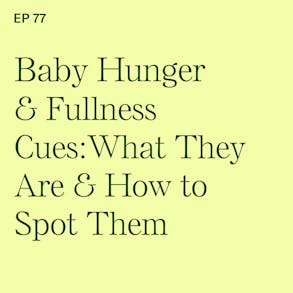
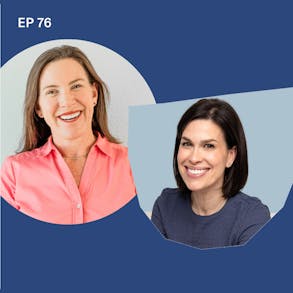
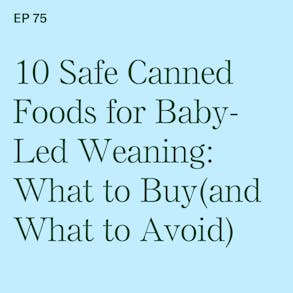
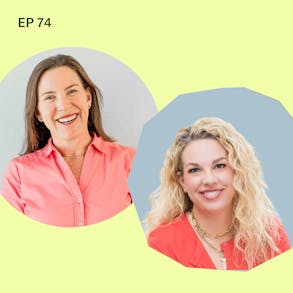
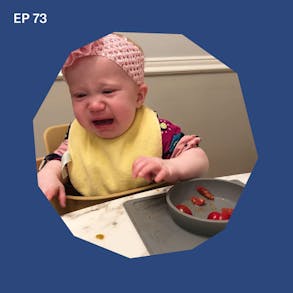
Dawn Winkelmann (1m 3s):
Well, and babies get stuck on purees and they're not actually eating a wide variety of food textures. This can impact their respiration abilities as well as their speech and language abilities. Since we need strong respiration in order to have good phonation.
Katie Ferraro (1m 17s):
Hey there Im Katie Ferraro, Registered Dietitian college nutrition professor and mom of seven specializing in baby led weaning here on the baby led weaning made easy podcast. I help you strip out all of the noise and nonsense about feeding, leaving you with the competence and knowledge you need to give your baby a safe start to solid foods using baby led weaning. Hey guys, welcome back. I am excited to welcome back our guest Dawn Winkelmann. She was our guests on the last podcast episode. And she's back today talking about something a little bit different. This is texture 101.
Katie Ferraro (1m 56s):
Dawn's got some Tips for Trying Trickier Textures. And if you're not familiar with Dawn Winkelmann, she is a speech language pathologist. She is a feeding therapist. She's also the feeding expert and product designer for all of the feeding products that the company ezpz makes. So ezpz is a leader in infant feeding gear. They make developmentally appropriate mats and bowls and cups and spoons for your baby when they're starting baby led weaning. So we're not going to be talking so much about gear today, but I do just like to mention that because there is a mention about purees and how we can do that with baby led weaning safely, so she'll mention the spoon that she designed. I'm an affiliate for ezpz, Sometimes people think I worked for them.
Katie Ferraro (2m 37s):
I wish I worked for them. I don't, but I love them so much. And I love promoting them. If you're checking out ezpz my affiliate discount code is KATIE10. If you had to ezpzfun.com, you can get a lot of the products that Dawn helped design. But I do love this company because a lot of other feeding companies make products that absolutely no regard to developmental appropriateness for the age. And so easy-peasy skips all that by employing Dawn. She's a great wealth of knowledge, and I'm so grateful that she's here today to talk about different textures in this episode called texture 101 Tips for Trying Trickier Textures with MsDawnSLP
Dawn Winkelmann (3m 15s):
Thank you so much for having me again, Katie. I love being here.
Katie Ferraro (3m 18s):
All right, today, we are going to be talking about a word that I know strikes fear into the heart of so many parents who are just starting solid foods, and that is texture. So before we dive into the trickier textures, let's start out talking about purees. And you know, I know you always point out that purees are an important texture for babies to master, but of course they're not the only texture that baby can eat. So done with purees. How do we honor the self feeding principles of baby Led Weaning and still offer baby like naturally pureed foods, such as yogurt or oatmeal or unsweetened applesauce. We can
Dawn Winkelmann (3m 50s):
And honor the self-feeding principles of baby Led Weaning while simultaneously encouraging babies to obtain their spoon milestones because parents can choose a baby led weaning spoon, which is a spoon that baby controls as compared to using an adult led spoon, which is a long handled spoon that the adult controls, I designed the baby led weaning spoon and called the ezpz tiny spoon, which can help babies obtain all their spoon milestones from bringing a preloaded spoon to their mouth, to dipping with the spoon to eventually scooping with it, to remember a spoon is a great tool for thin thick and lumpy purees like yogurt, oatmeal, cottage, cheese, but it's also perfect for smash Baby Led Weaning foods like squishing a blueberry on there using those sensory bumps on the tiny spoon to be able to help with that or squishing it Pinto bean on there.
Dawn Winkelmann (4m 42s):
So you can easily have a variety of different textures onto the spoons so we can honor those. So feeding principles of baby Led and winning by also introducing a spoon to, and kind of working on both of these at the same time. If you guys are interested in the ezpz tiny spoon, you can go to ezpzfun.com and use Katie's code, which is Katie10 for 10% off.
Katie Ferraro (5m 4s):
And Dawn, I know we were talking in the last episode that you were on that's episode 194. You guys Dawn shared a lot more about the shape and the size. If you're like, wait, how does an early eater eat a Pinto bean? Because you need to be cutting the longer strips and sticks of food. Go back and listen to episode 194, where Dawn shares about the shape and the size of foods and why earlier eaters actually need bigger pieces of food. But she's talking a little bit about how they can safely eat the smaller ones too, if and when the utensils are right and that she did design that tiny spoon for ezpz, which is, I just love chatting with you, Dawn. Cause there's so many features to that baby led weaning spoon that I don't think people are aware of until they like really learn about it from you.
Dawn Winkelmann (5m 42s):
Yes. I totally agree. It's important to pick that right spoon because we want a spoon. That's going to be able to be a spoon that last, that whole first six months period, when Baby is starting solids, you know, instead of having to buy multiple spoons in order to kind of move through those ages and stages of development. So I really appreciate your support of the tiny spoon and how you use it as well.
Katie Ferraro (6m 7s):
One thing I love learning from you is that those longer handled spoons, those are not for baby led weaning that's for parent led weaning. Could you share a little bit about why the land, because we are talking about purees here. We want the baby to feed themselves period, but we don't use the long-handled spoons with the big bowl. How does the long handle in the big bowl of the wrong type of spoon negatively impact your baby's ability to sell feed?
Dawn Winkelmann (6m 26s):
So I think that's actually one of the reasons why babies do get stuck on purees is because of the shape of the spoon. So basically the spoon bowl, which is the very tip of the spoon, this needs to be narrow so that a baby's tongue can kind of cup and be able to get the food off of the spoon. Most spoons on the market have a huge spoon bowl, which means that that food is actually dumped onto the mouth. And that's where all this gagging and choking and parents get even more fearful and get stuck on purees is because of the fact that they're just using the wrong spoon. So we want to have a spoon. It has a narrow spoon bowl.
Dawn Winkelmann (7m 6s):
We want a spoon to be able to be flexible. The tiny spoon is made out of a hundred percent food grade silicone. So it's very flexible making it really easy for babies to be able to, you know, as they're learning to bring that spoon to their mouth, they're starting to really focus on that hand to mouth coordination, that eye contact with the spoon, which is so important. However, if a parent is using a long handled spin with a big spin bowl, and we are bringing that food to baby and putting that into the baby's mouth, baby has no way of knowing how far that spoon is going and that that food is being dumped onto their tongue. And what happens is they start to lean back in this process as a puree, just fills up their oral cavity. And as we know, the further back a baby liens, the more open their airway is.
Dawn Winkelmann (7m 50s):
So now we've got an over abundance of food into the mouth. We have the wrong spoon, and now we have baby in a very compromised angle while they're eating, which all can develop into gagging and choking issues. And then really even continue to make mealtime, even more fearful with four parents. When really we want to be able to start off with some purees, use the right spoon, have baby be in that right feeding angle, and really have mom and dad or any caregiver be really confident and have baby feel like food is safe.
Katie Ferraro (8m 24s):
Okay. Another question related to purees, you mentioned that parents get stuck on purees and we see that all the time for weeks and months definitely don't need to be. How does that hold your baby back though, if you're not moving on from purees, like what's the drawback to being stuck on purees for too long. If you're doing solid foods with your baby
Dawn Winkelmann (8m 43s):
Well, the babies get stuck on purees and they're not actually eating a wide variety of food textures. This can impact their respiration abilities as well as their speech and language abilities. Since we need strong respiration in order to have good foundation and a baby starts practicing holding their breath when they chew. And when they swallow, remember there is a small window of opportunity between six and nine months of age where babies really get to explore and practice eating a variety of textures. And this critical exposure improves their oral motor skills like munching and chewing as well as their swallowing skills like drinking from an open cup and feeding milestones too, such as baby led spoon-feeding and grasping foods with their fingers.
Dawn Winkelmann (9m 26s):
If a child is stuck on purees and they end up not having that opportunity to exercise their oral musculature for both feeding and for speech. And that's why most babies that I see that are stuck in periods are delayed in both their feeding skills, as well as their speech skills. And remember, these kids need to be able to be exposed to a variety of textures before that nine month mark, because research shows that babies who haven't been introduced to finger foods by that nine month mark, they may have an increased risk of developing feeding issues and even picky eating. So basically in summary purees are an important text, are not the only texture. There needs to be a variety of other safe textures out there for your baby to have the opportunity to try and be successful with.
Katie Ferraro (10m 8s):
And I love that you're always reminding us and parents that, you know, your feeding milestones come before your speech milestones, but if you're delayed on one, you're going to be delayed on the other. It's why, when we see, you know, kids walking around with pacifiers in their mouth or on the bottle way too long, you know, well past the one year mark, you can anticipate that because their mouth is always full of the wrong thing, that they're not going to have the opportunity to practice speech, which is going to be, and not to stress you out. But the next thing that you're going to be concerned about as a parent, so get those feeding milestones down in the right order at the right time so that you can then proceed to the speech ones and Dawn. Thanks for always linking those two together. I know that's what speech language pathologists do, but it's sometimes hard as like a nutrition person to remember that it's all related.
Dawn Winkelmann (10m 44s):
Yes. Thank you.
Katie Ferraro (10m 46s):
All right. Let's go to the other end of the spectrum name, some textures that we do not want to feed babies and why?
Dawn Winkelmann (10m 52s):
So we don't want to offer baby hard textures like raw apple is a perfect example because Baby can't chew that heart texture and thus, if they can't chew that hard texture, then they're not able to protect their airway. So we don't want to provide that texture. We also don't want to provide, let's say like a sticky texture like raisins, because they can easily stick somewhere into their oral cavity and be dislodged easily causing a choking incident. But most importantly, I think what I want to talk about when we talk about textures is I want to talk about multiple textures like puffs. I've had so many babies choke on these multiple circular puffs because most of these possible clump together into the mouth becoming a hard round shape, which is the shape that we don't want to give babies because that can get stuck in the wind pipe or the lungs.
Dawn Winkelmann (11m 42s):
So if we're going to choose a multiple texture, like a puff, I really like puffs that are having long stick shapes, kind of like puffers baby that we both love that has a multiple texture that baby can hold on to be able to, again, use that grass that we've been talking about, being able to try another type of texture, which is a multiple texture, having that ability to put that onto the gum line and practicing that nice munch chew, with a really safe, multiple texture. I love that particular food item because it has the way that it melts is so good, but most of the commercial multiple puffs don't have that. And they actually clump together and to get stuck, it's a real toking risk for children.
Katie Ferraro (12m 24s):
And if I can add my nutrition piece, whenever Dawn and I teach, he's always teaching the physiology and the anatomy and the safety of swallowing stuff, but I'm always trying to include the nutrition part, those the puffs, like the typical puffs that you see in a canister on the shelf at a grocery store, packaged and processed, they were put into that canister long before your baby was even born from a nutrition standpoint. They're just refined white carbohydrate, oftentimes with added sugar and added salt. So we don't want your babies are lying on refined white carbs. We don't want them having any added sugars. And we certainly do want to minimize salt to the greatest extent possible. So parents buy those little puffs thinking, well, oh, this is just what babies eat from a developmental standpoint. As Dawn pointed out, there can be exactly the size that can include your baby's airway early on.
Katie Ferraro (13m 6s):
They mix mind-meld with saliva and they form a bolus, a starch Baldor, pure carbohydrate. They're not nutritionally appropriate. They're not developmentally appropriate. Don't waste your money on basically buying foods that aren't foods for your baby when your baby can eat real foods. And that's what we both teach separately most of the year, but then we come together a couple of times each year. And co-teach a workshop that it was wondering if you could just share with our audience Dawn, our upcoming workshop for those parents who want more information about getting beyond the simple starter foods. What's it all about?
Dawn Winkelmann (13m 37s):
Our workshop is called, what do I feed my baby after avocado banana and sweet potato. And basically we give you a step-by-step idea on being able to offer a whole bunch of different foods, some proteins, some fruits and vegetables, some carbohydrates, and even some potentially allergenic foods too. And being able to have a plan for your baby in order to be able to start this journey together, built on safety, which also will build trust with between you and your baby. And that is the foundation of being able to make meal time successful for your family right
Katie Ferraro (14m 13s):
Now is a free online workshop that Dawn and I are going to be co-teaching. If you go to baby led weaning workshop.com, you can sign up again. We only do this a couple of times each year, but when we do it, we always give away one of our most requested infant feeding guides. So everyone on this workshop, again, it's called, what do I feed my baby after avocado banana and sweet potato. We're going to give everyone on there. A free gift as a thank you for coming to learn about baby led weaning from two credentialed experts. It's our sample eating and drinking schedules for six, nine, and 12 month olds. So we can't wait to share this info with you. If you like learning about baby led weaning from the leading dietitian in BLW and learning from the leading language pathologist and BLW, we're getting together to teach.
Katie Ferraro (14m 54s):
What do I feed my baby after avocado banana and sweet potato? And just head to baby led weaning workshop.com to sign up. Now, Dawn you've told us like a little bit about purees and what foods we stay away from, but once we've established, okay, babies don't need purees for any considerable length of time. And we want to stay away from the dangerous textures. What are some examples of textures that we can offer our baby in baby led weaning that are safe?
Dawn Winkelmann (15m 18s):
Yes. So we can do those dips and purees that parents usually feel comfortable with. But then we can also take those same foods in, have that be a thin or a thick liquid. And we can give that from an open cup. We can also a squish foods like beans and blueberries onto the baby led spoon. We can provide strips and Spears of moist foods and soft foods like shredded meats or moist fruits, vegetables. And of course, like we were talking about earlier, the potentially allergenic foods too. So we can continue to provide these different foods in different ways. We can do this with different temperatures and different textures, different tastes.
Dawn Winkelmann (15m 58s):
And so what we really want to be able to do is that we want to continue to offer that. So what we don't do is get stuck on those purees. What we don't do is have babies get stuck on five foods. And when we talk about this all the time, you need that, I'll see babies that are 10 months old and they still only have 15 foods. They haven't had this variety of textures. And sometimes they actually are actually eating some of the dangerous textures that I was talking about earlier. And so they're not really being provided with a variety of different safe textures. So it's really important to really hone in on all these different types of textures and really just give them a go try different ones every single week in order to be able to establish a safe and successful journey for your baby.
Katie Ferraro (16m 44s):
And in that free online workshop that Dawn and I will be co-teaching what do I feed my baby after avocado banana and sweet potato, Don's actually gonna run you through what she calls her 40 tips that are Ms. Dawn's 40 tips for how to make food safe for baby led weaning. And she's going to dive in one of them. Spoiler alert is texture. She's going to be teaching a little bit about rubbery textures and some of the different textures that are a little bit more challenging for babies that we know they eventually need to eat, but how do we do it safely? Dawn and I are all about teaching you how to give your baby a safe start to solid foods with baby led weaning because unfortunately there's so much information out there about baby led weaning, not taught by credentialed. People taught by well-meaning, but unfortunately, misinformed bloggers or influencers, who to be honest, have no business teaching about nutrition and child development.
Katie Ferraro (17m 31s):
So we hope that you will get your feeding information from credentialed experts, Dawn and I will be co-teaching that series of live workshops together. The sign up is at babyledweaninworkshop.com and Dawn I'm so excited. Cause these are always really, really big workshops. They fill up, we have to cap our zoom. I forget how many thousands of people, but like it's still kind of an intimate feeling. You have an opportunity to ask us, we do a huge Q and a like you and I can stay on and answer questions forever. And I love doing the Q and a with you too, because you bring your speech language pathology background inside the baby led weaning. I bring the nutrition side and together we help parents get unstuck. So thank you for being here to talk a little bit about trickier textures. I know we'll be doing it more on the workshop and Dawn tell our audience where they can go to learn more about you and the work that you're doing.
Dawn Winkelmann (18m 14s):
They can go to MsDawnSLP.Com for more information. And especially if you're feeling like your baby is, is stuck and needs to be able to possibly have one or two sessions of feeding therapy as well. I'm happy to
Katie Ferraro (18m 28s):
And help you in that way. And Dawn is a feeding therapist. She's been on the podcast. A number of times were good colleagues, but also good friends in real life. And she's the most prolific guest on the podcast. I think it's because she is one of the preeminent leading experts in baby led weaning around the world, but she also happens to be a feeding therapist. And I know the term feeding therapy kind of drives fear into many parents hearts. So we did an episode number 152 Dawn came on to talk about how do I know if my baby needs feeding therapy? Go listen to that. If you're worried that maybe your baby does have something that's not typical, Don talks about why you don't need to be scared of feeding therapy. And as a feeding therapist, she talks a little about what happens inside of a session. So you can get prepared and also learn more about her resources in the event that you might need a feeding therapist that's at BLW podcast.com/152 to learn more about feeding therapy.
Katie Ferraro (19m 18s):
If you want to take that workshop with Dawn And I it'll be at babyledweaningworkshop.com, go sign up now before the workshop fills up, Dawn, thanks so much for being here. It was great chatting with you.
Dawn Winkelmann (19m 28s):
Thank you so much. Hope to see you guys all at the workshop, bye bye,
Katie Ferraro (19m 32s):
Well, I hope you guys enjoyed that episode about texture with Ms. Dawn SLP. I know the concept of texture can be tricky and sometimes parents are like, I can't even name 10 textures. Dude, come to our free workshop. Dawn is going to blow your head up with texture knowledge again, we're teaching a free online workshop. This is a series of live workshops. It's called what do I feed my baby after avocado banana and sweet potato? When I say series, it's one discreet workshop that we teach together, but we do a whole bunch of them in a one-week period and they're all live. There's so much fun. If you're feeling stuck on a simple starter foods, Dawn and I have the tips to help you get unstuck. Come check out. What do I feed my baby after avocado banana and sweet potato?
Katie Ferraro (20m 14s):
The signup is at babyledweaningworkshop.com. And don't forget everyone on that workshop is going to get a copy of that infant feeding guide. This is one of our most requested ones that we've done together. It's called the sample eating and drinking schedules for six, nine, and 12 month olds. Again, you can sign up for those free live workshops that Dawn and I will be teaching together at babyledweaningworkshop.com. Hope to see you there. Hope you learned a little bit about texture. I've got a lot more on the workshop for you two coming up soon. If you're interested, see you next time.
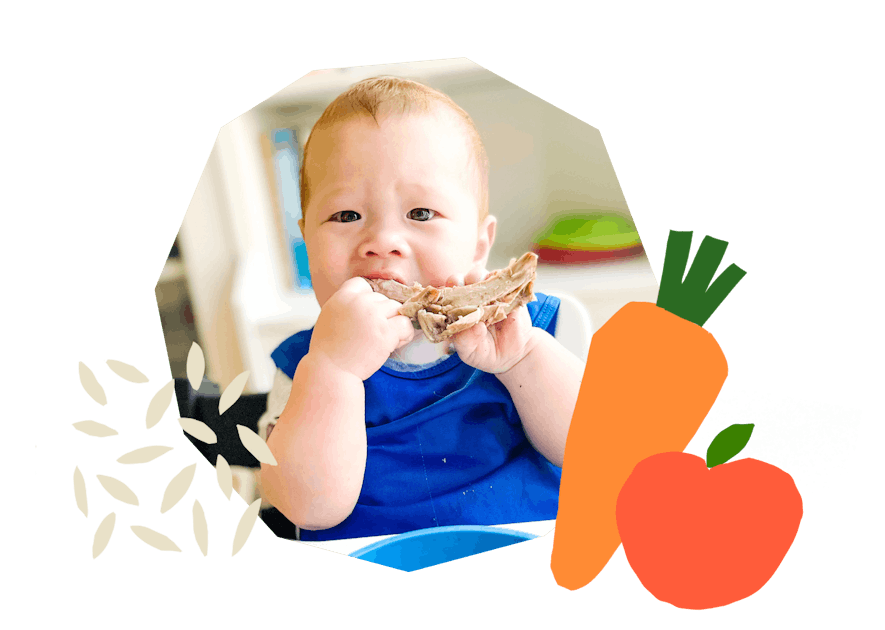
The Program Baby-Led Weaning with Katie Ferraro
A step-by-step digital program for starting solid foods safely and navigating the original 100 FIRST FOODS™ meal plan with baby-led weaning.
 EXPERT-LED, PROVEN APPROACH TO EATING REAL FOOD
EXPERT-LED, PROVEN APPROACH TO EATING REAL FOOD CONCISE VIDEO TRAININGS TO MASTER BABY-LED WEANING
CONCISE VIDEO TRAININGS TO MASTER BABY-LED WEANING 100 FIRST FOODS DAILY MEAL PLAN WITH FOOD PREP VIDEOS
100 FIRST FOODS DAILY MEAL PLAN WITH FOOD PREP VIDEOS
Baby-Led Weaning for Beginners Free Workshop
Is your baby ready to start solid foods, but you’re not sure where to start? Get ready to give your baby a solid foundation to a lifetime of loving real food…even if you’re feeling overwhelmed or confused about this next stage of infant feeding.
Get baby-led weaning recipes and tips delivered to your email inbox.

